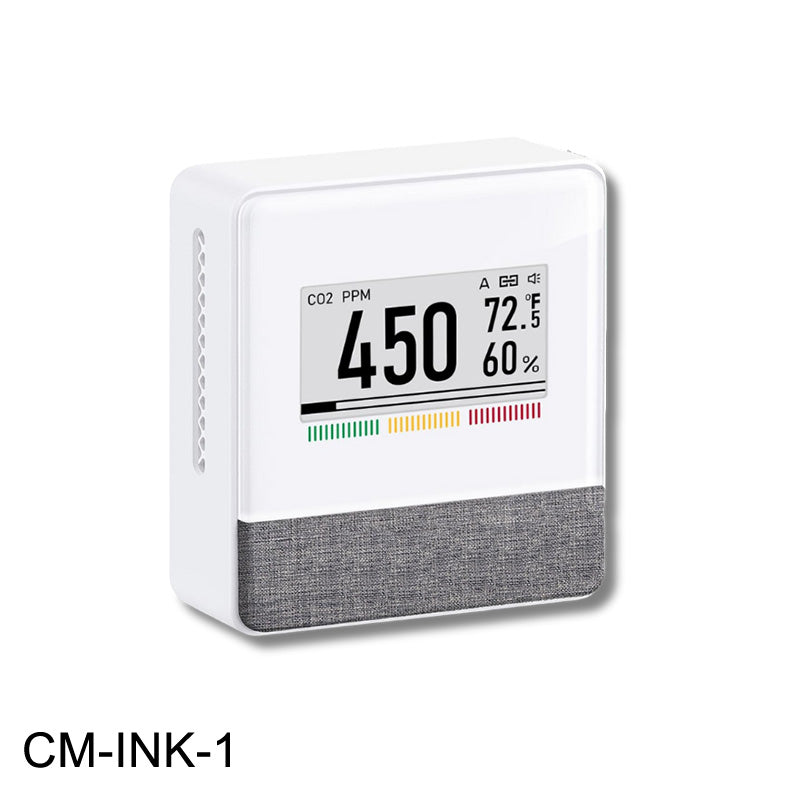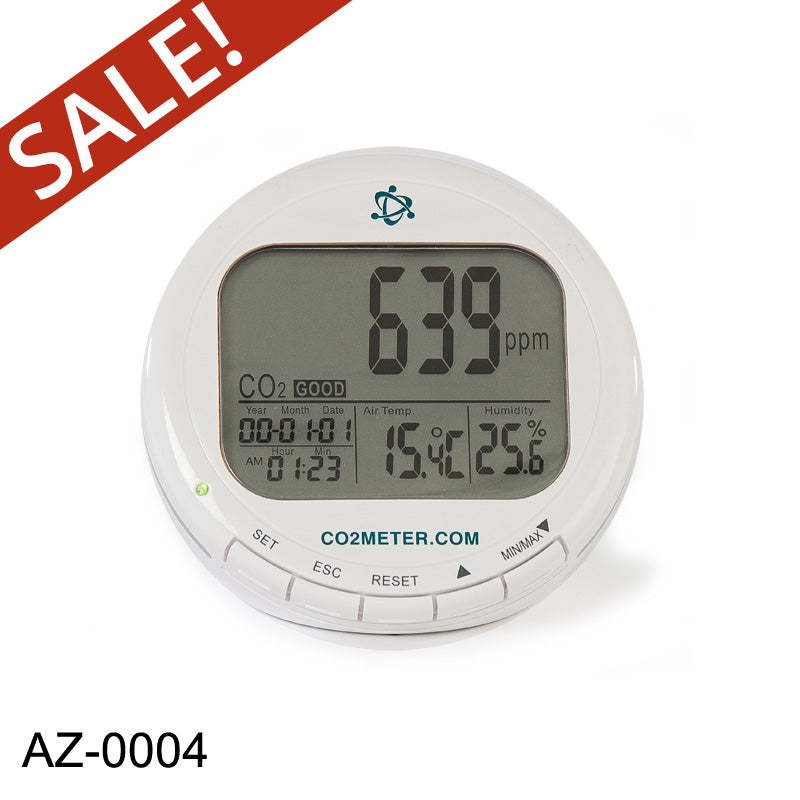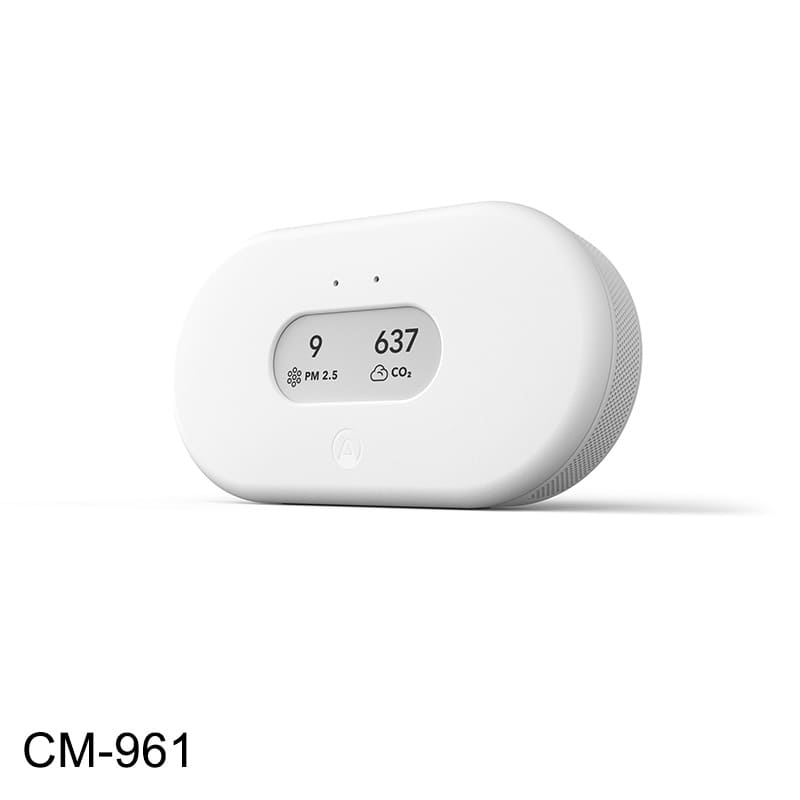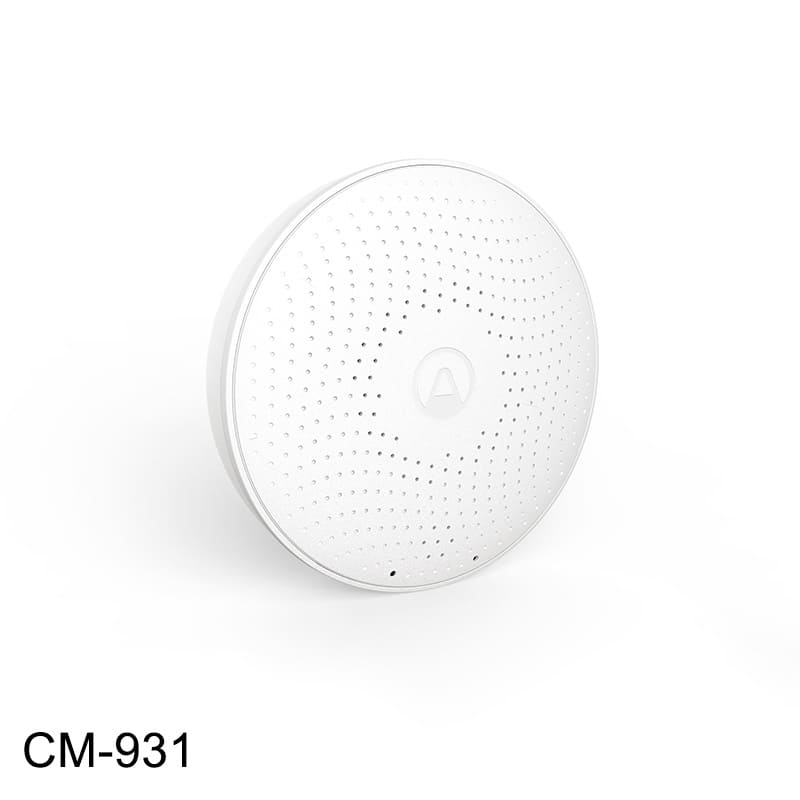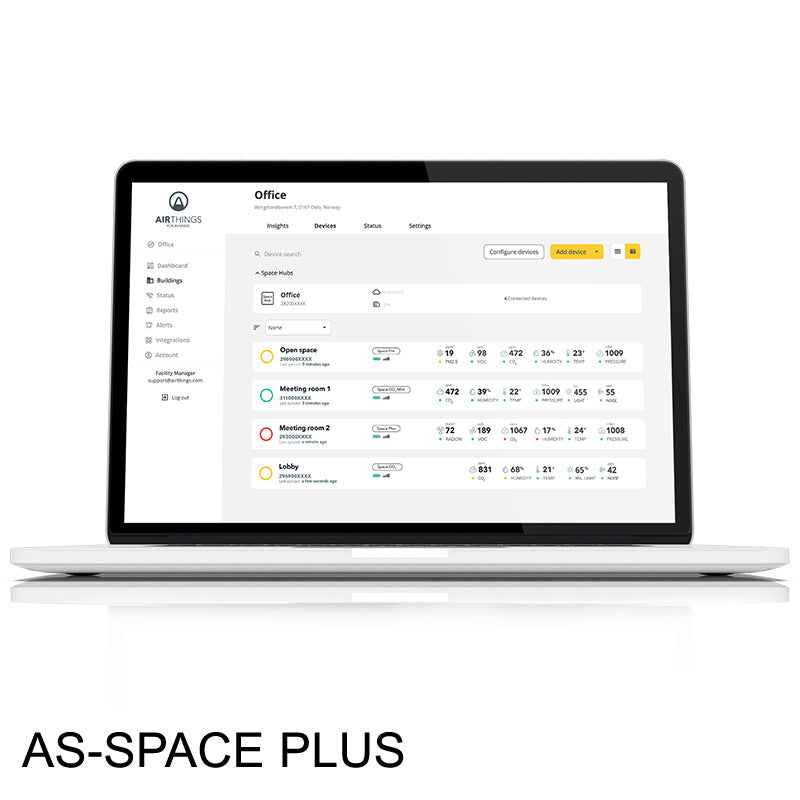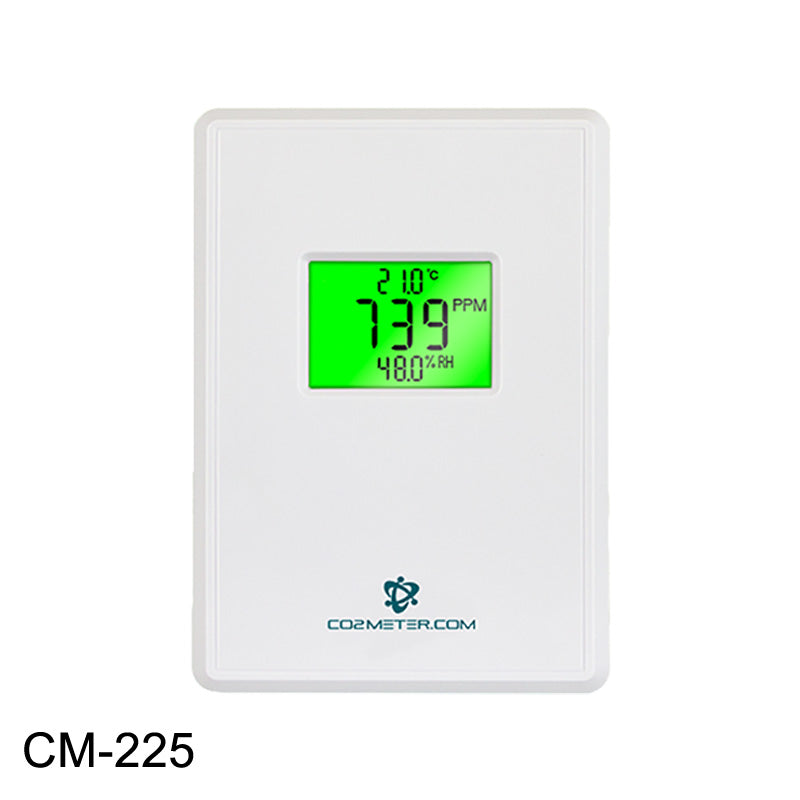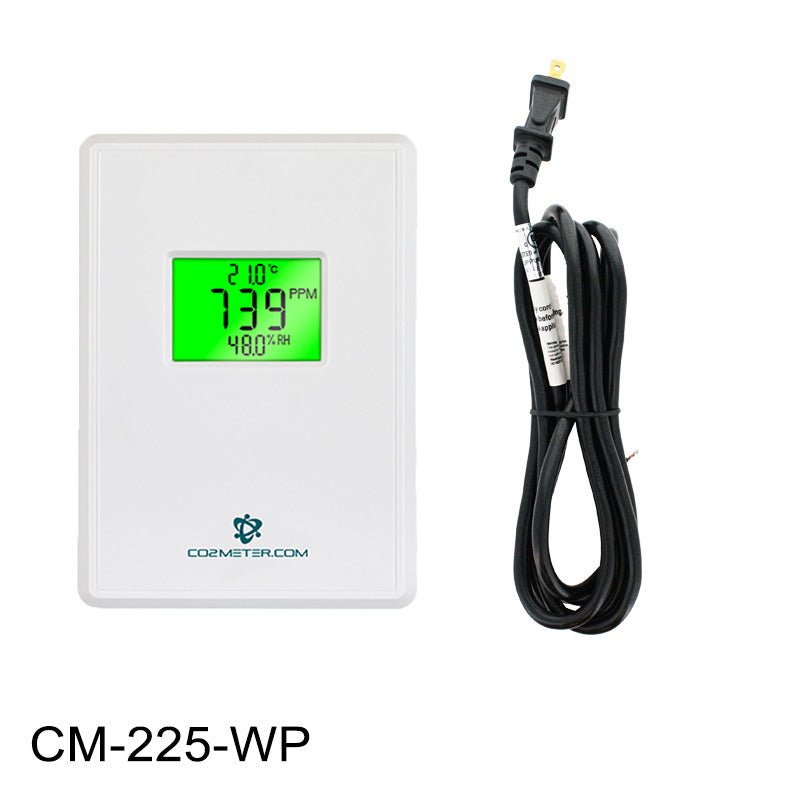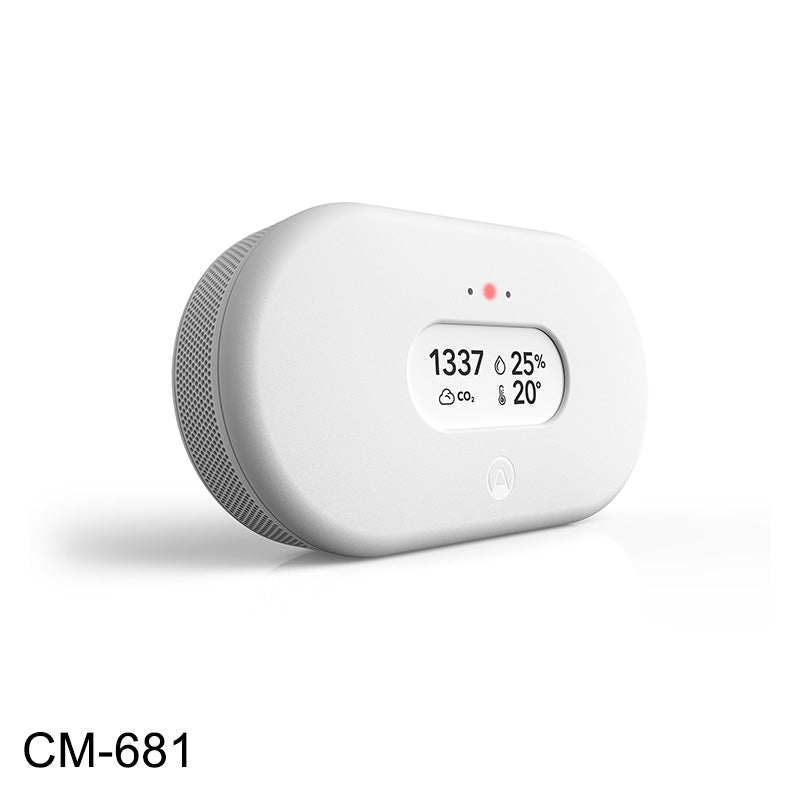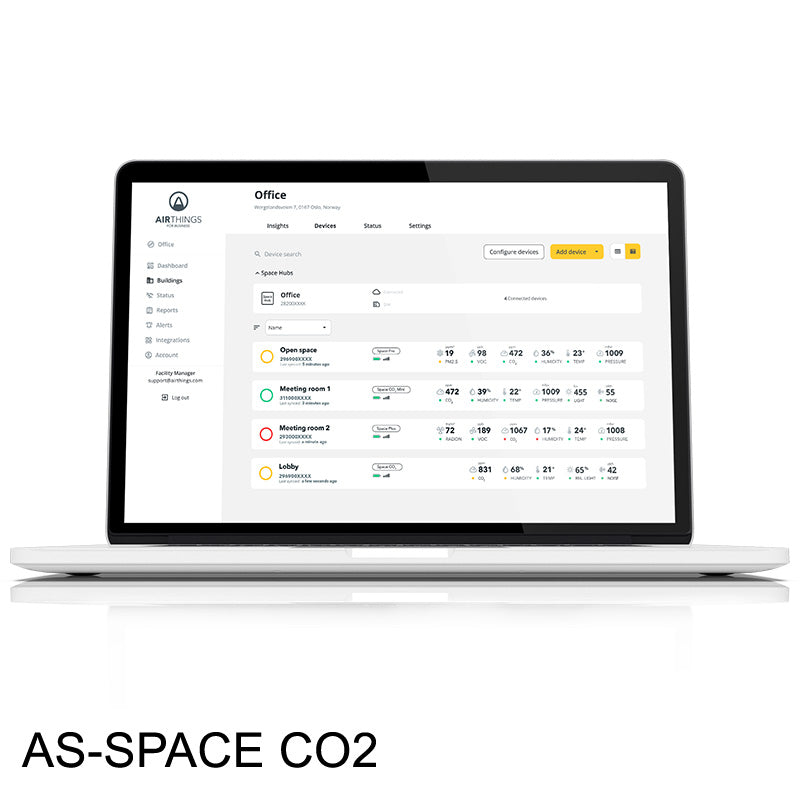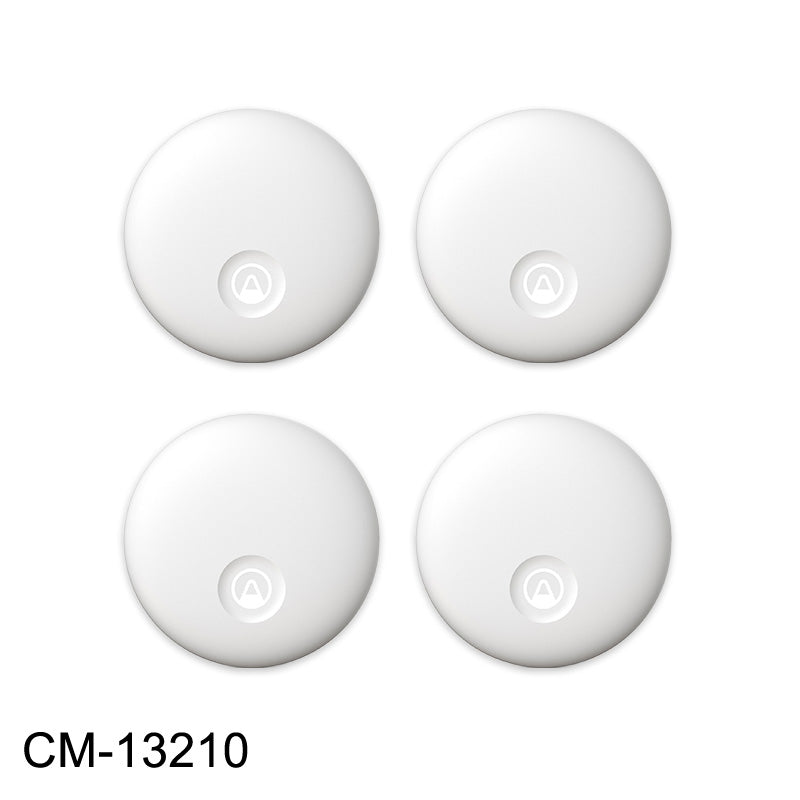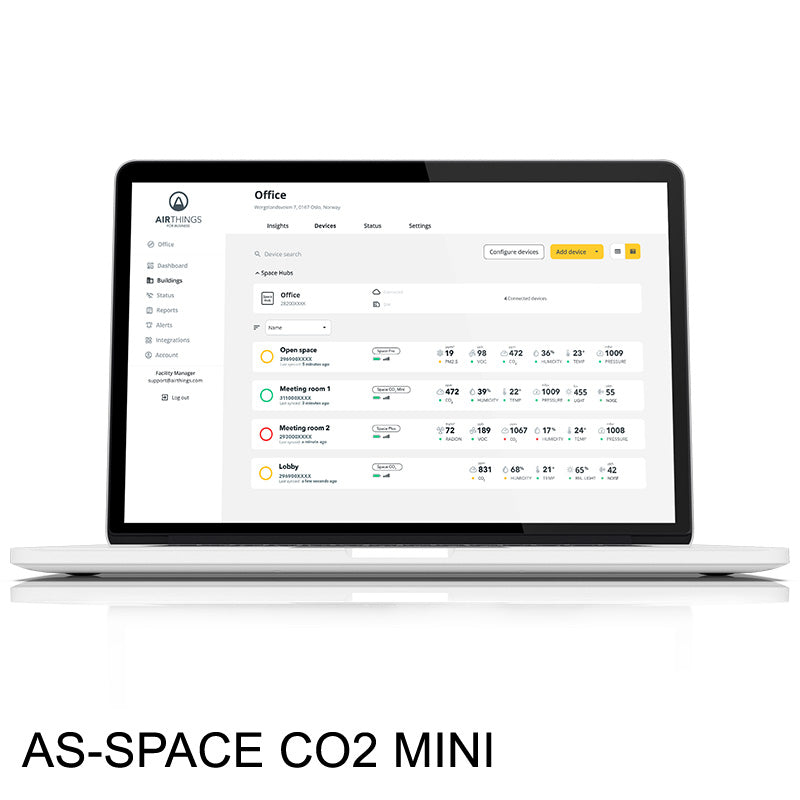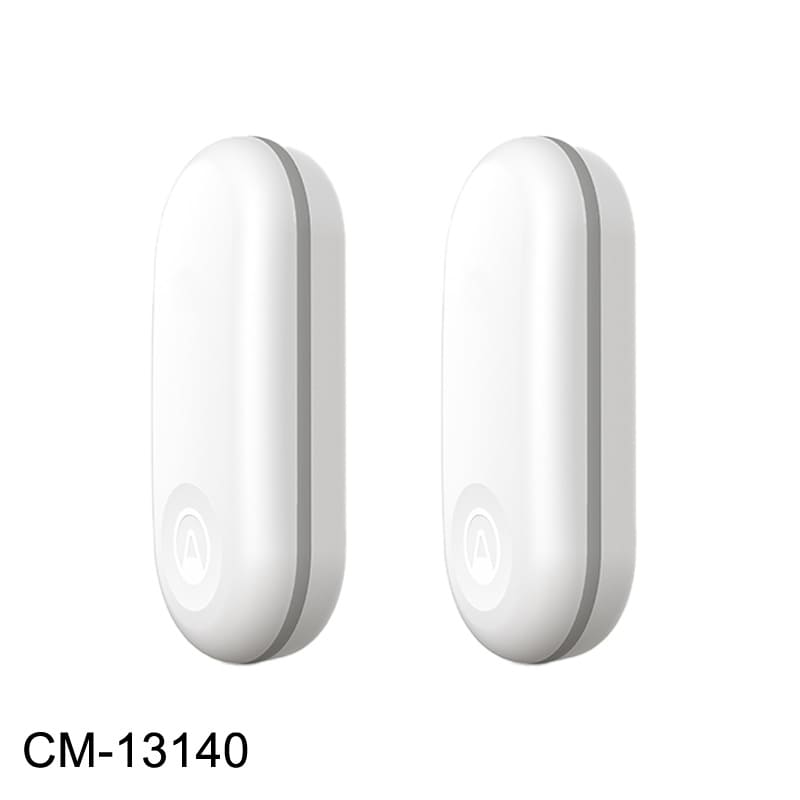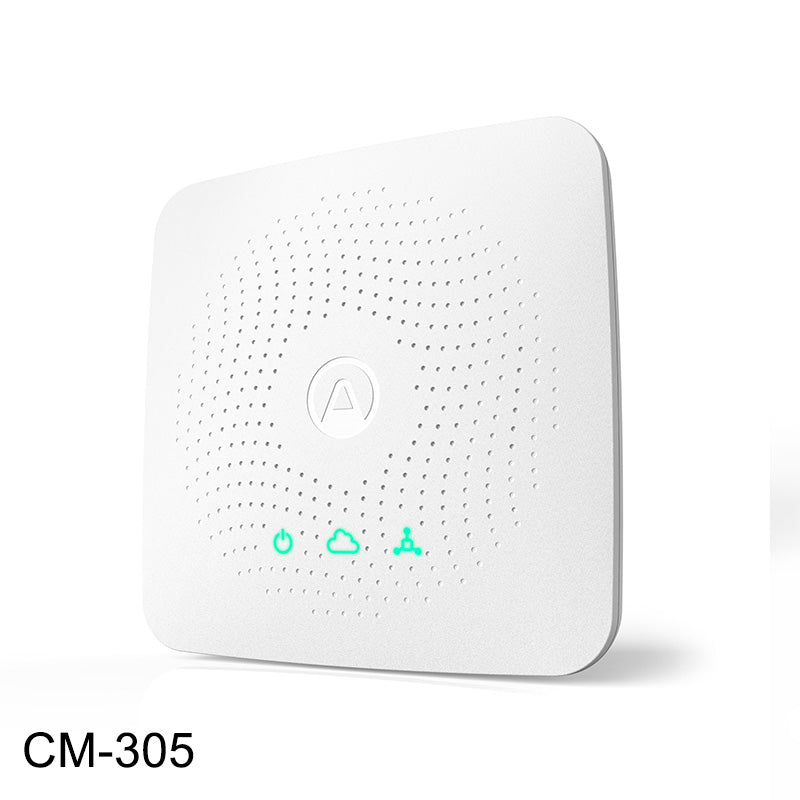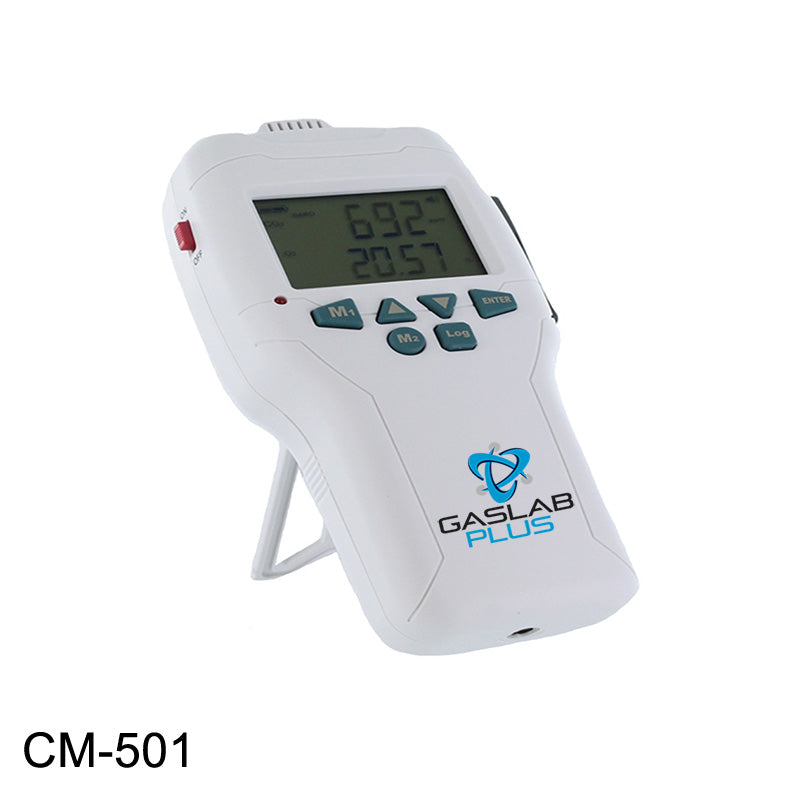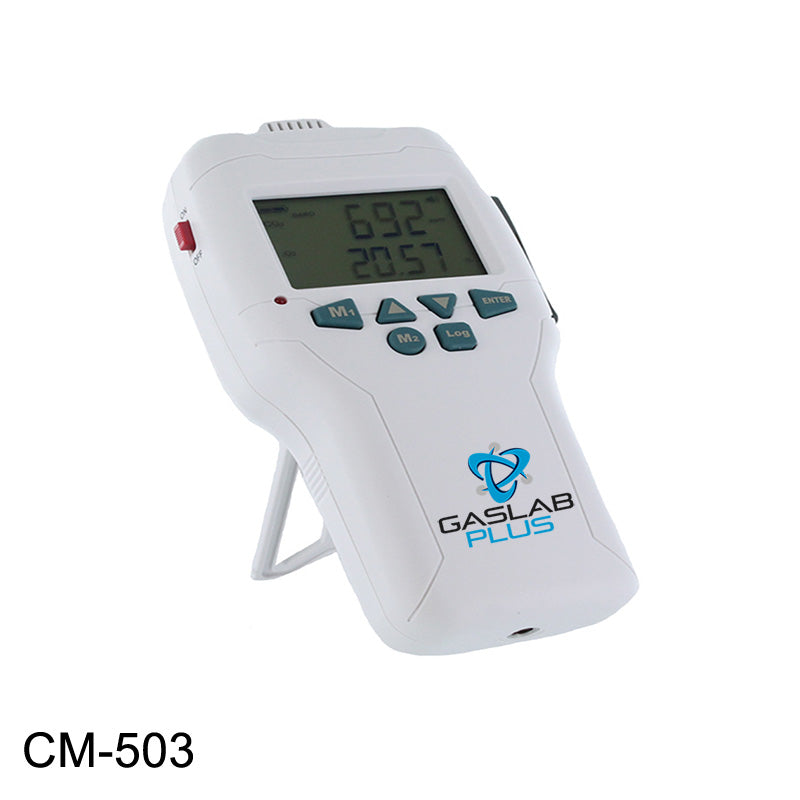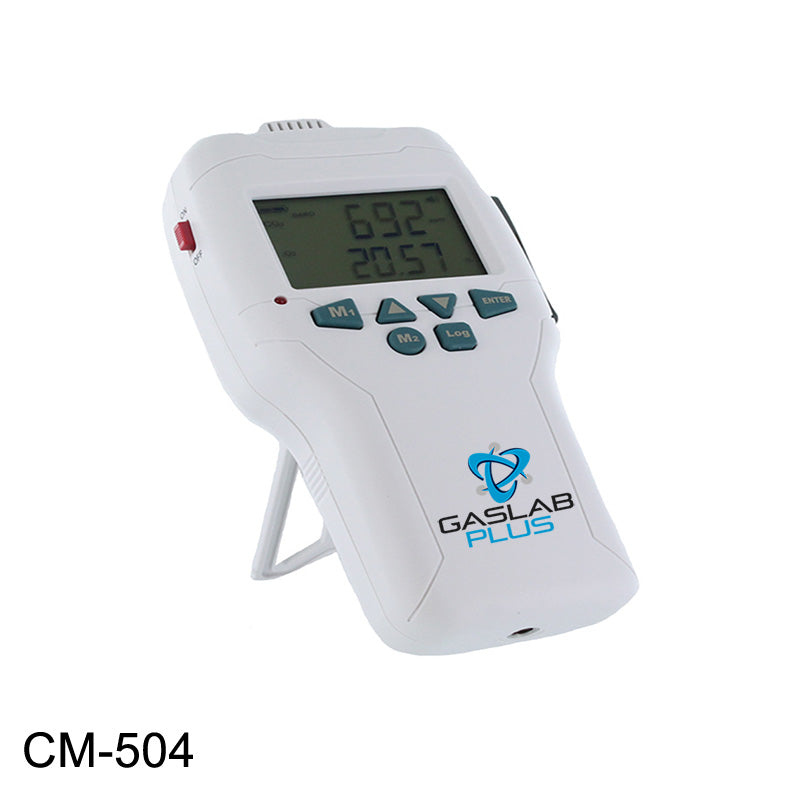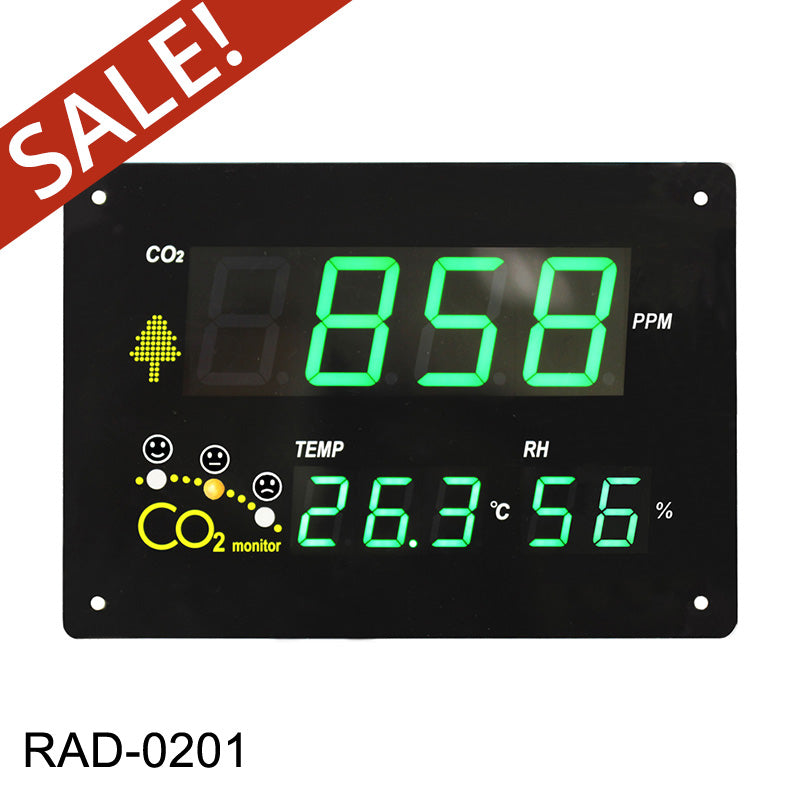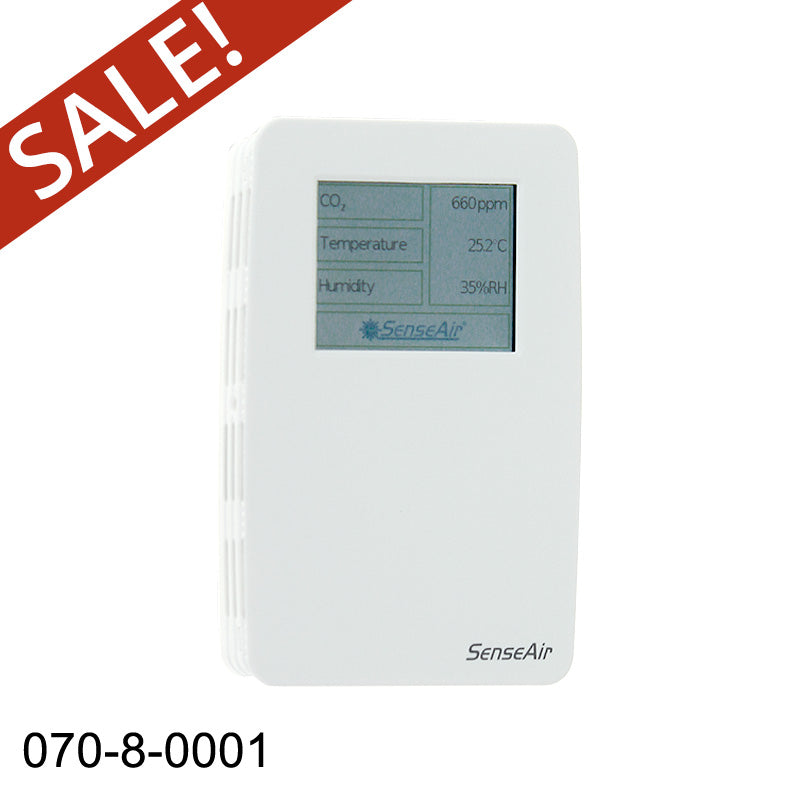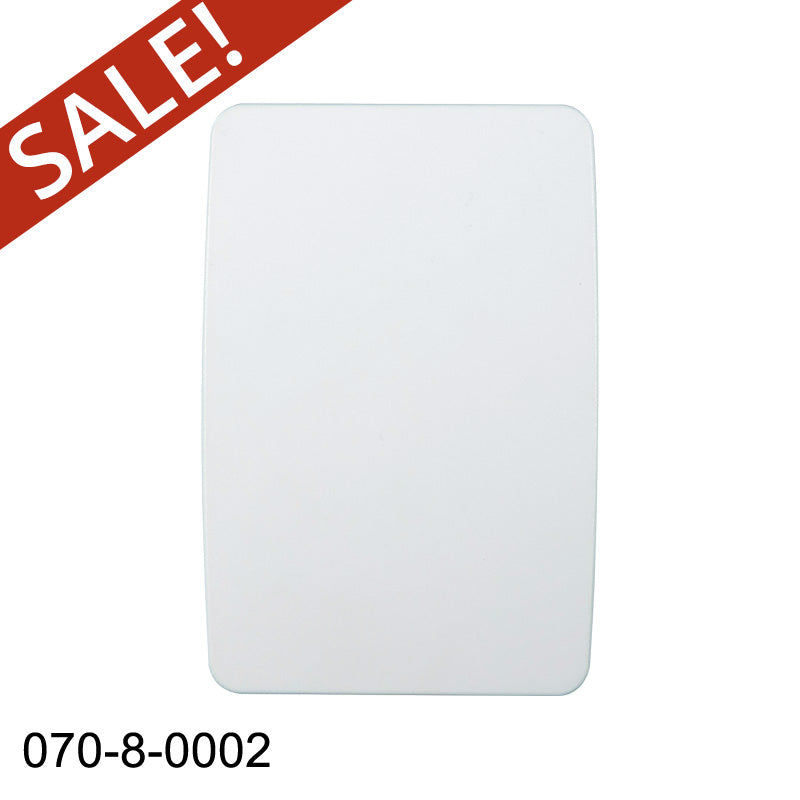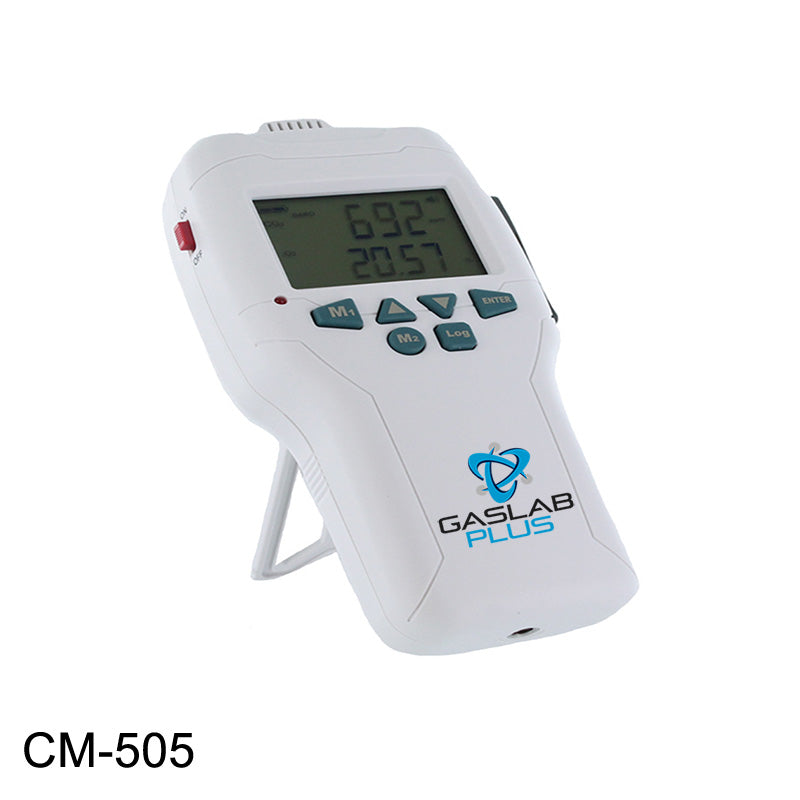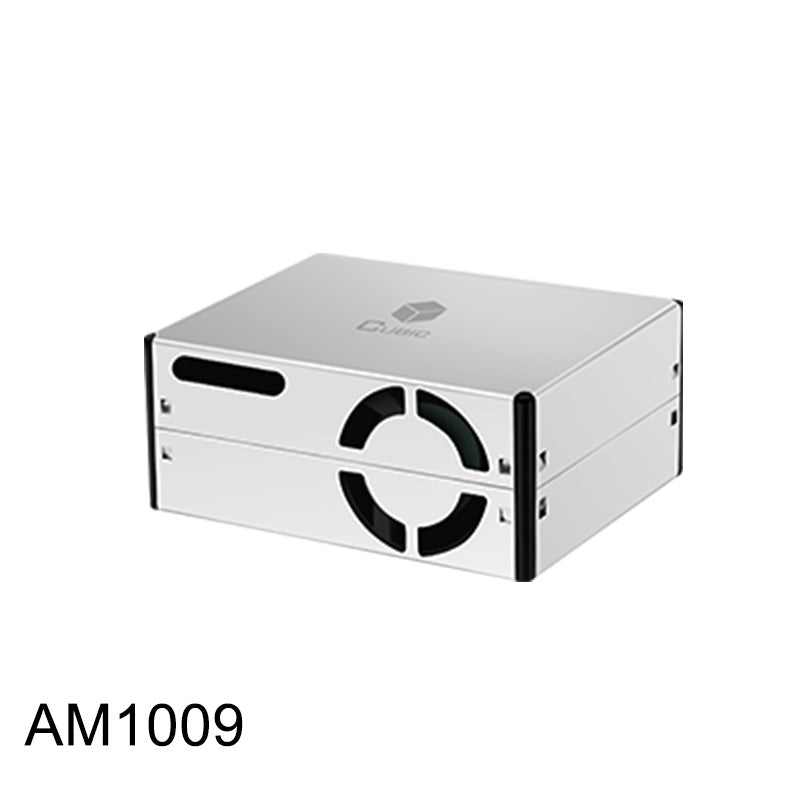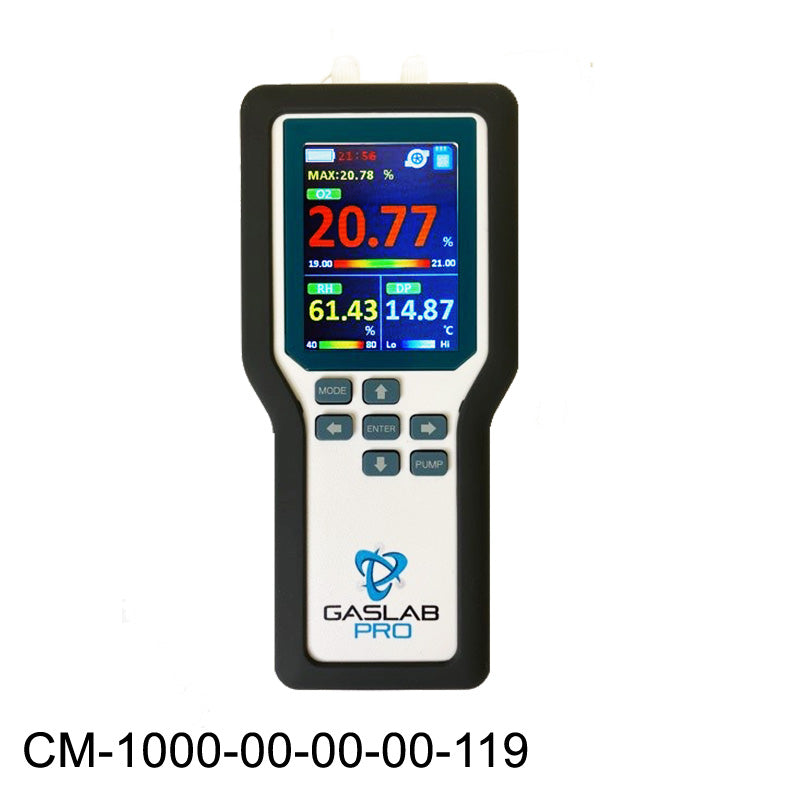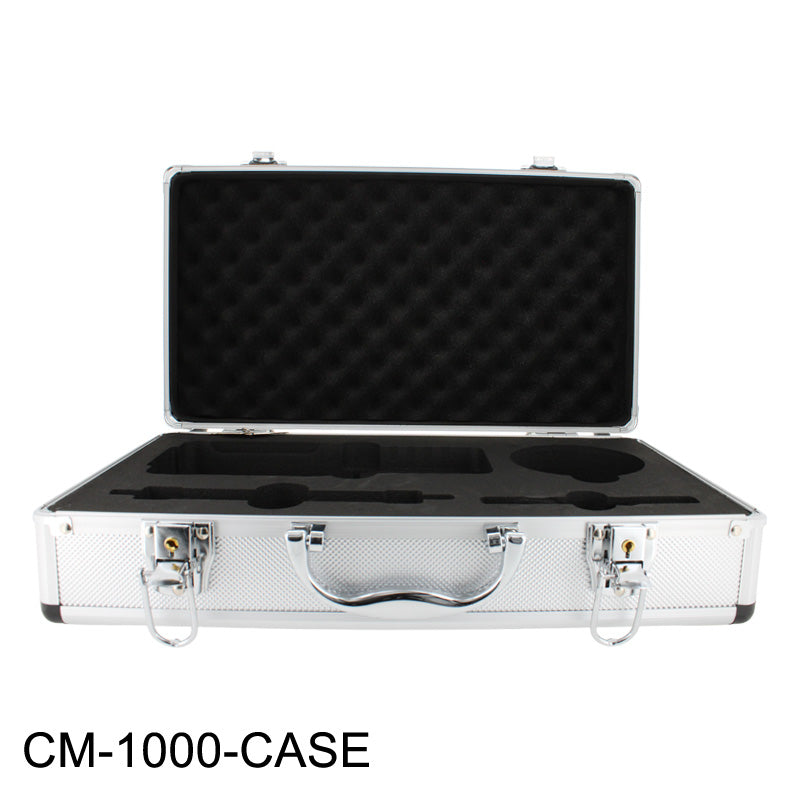Indoor Air Quality
Improve Indoor Air Quality with CO2 Monitoring
The average person spends 90% of their time indoors, where air can be 2–5 times more polluted than outdoors (EPA). Elevated CO2 levels can also signal poor ventilation and can point to dust, mold, or other harmful pollutants trapped inside.
View the indoor CO2 level recommendations chart here.
Take Control of Your Air Quality with Indoor Air Quality Monitors
✅ Spot ventilation issues early with indoor air quality CO2 monitors
✅ Protect health, focus, and productivity in any home or commercial space
✅ Choose the right solution with our Product Recommendation Quiz
Want to dive deeper? Explore our indoor air quality blogs for expert tips, research, and case studies.
Learn more about our indoor air quality meters, monitors and sensors below.
-
desktop
Indoor Air Quality CO2 Monitor
The Indoor Air Quality CO2 Monitor, is a smart indoor air solution for real-time monitoring of carbon dioxide (CO2), temperature,...
$149.00 USD$149.00 USD$149.00 USD -
The TIM10 Desktop CO2, Temp, & Humidity Monitor continuously shows carbon dioxide, temperature, and relative humidity levels so you can monitor...
4.77 / 5.0
(22) ( 22 )
$39.00 USD$39.00 USD$39.00 USD -
Select options
Take control of your building's indoor environment with the CM-961: Space Pro Smart CO2, VOC, Temperature, Humidity Monitor for Commercial...
$385.00 USD$385.00 USD$385.00 USD -
Select optionsfixed/wall mount
Space Plus: Radon and CO2 Indoor Air Quality Monitor
The Space Plus: Radon and CO2 Indoor Air Quality Monitor is designed to provide real-time air quality insights across 7...
$198.00 USD$198.00 USD$198.00 USD -
Select optionsfixed/wall mount
CO2, Temp, and RH Indoor Air Quality Monitor
The CO2, Temp, and RH Indoor Air Quality Monitor is a simple, low-cost, and maintenance-free fixed wall-mounted device. This unit is...
5.0 / 5.0
(1) ( 1 )
$325.00 USD$325.00 USD$325.00 USD -
Select optionsfixed/wall mount
Space CO2: Indoor Air Quality CO2 Monitor for Businesses
The Space CO2: Indoor Air Quality CO2 Monitor for Businesses is a professional-grade CO2 solution that is designed to help...
$250.00 USD$250.00 USD$250.00 USD -
Select optionsfixed/wall mount
Space CO2 Mini: Indoor Air Quality Monitor 4-Pack
The Space CO2 Mini: Indoor Air Quality Monitor 4-Pack offers a compact, wireless air quality monitoring solution designed specifically to help...
$796.00 USD$796.00 USD$796.00 USD -
Select optionsfixed/wall mount
Space Nano: Indoor Air Quality Tester for Mold Risk
The Space Nano: Indoor Air Quality Tester is a compact, indoor air quality solution that is designed for smart buildings that...
$220.00 USD$220.00 USD$220.00 USD -
fixed/wall mount
Space Hub: WiFi Gateway for Indoor Air Quality Monitors
The Space Hub Wireless (WiFi) Gateway for Indoor Air Quality Monitors is designed to connect the "space" indoor air quality...
$275.00 USD$275.00 USD$275.00 USD -
Handheld
Portable CO2 Detector and Alarm
The Portable CO2 Detector and Alarm is a handheld gas detector and data logger designed to measure concentrations in real-time with audible indication. Features...
4.33 / 5.0
(9) ( 9 )
$419.00 USD$419.00 USD$419.00 USD -
The Carbon Monoxide (CO) Handheld Gas Detector is a portable data logger designed to measure carbon monoxide concentrations with long-term data...
$395.00 USD$395.00 USD$395.00 USD -
The Carbon Dioxide and Carbon Monoxide Handheld Gas Detector is designed to measure both CO and CO2 concentrations in real-time with data...
5.0 / 5.0
(1) ( 1 )
$659.00 USD$659.00 USD$659.00 USD -
fixed/wall mount
cSense Large Character Wall CO2 Monitor
The cSense Large Character Wall CO2 Monitor is an easy-to-read and cost-effective fixed indoor air quality indicator for homes, offices...
$199.00 USD$199.00 USD$199.00 USD -
Select optionsfixed/wall mount
070-8-0001 tSense Touch Screen CO2 + RH/T Transmitter
The 070-8-0001 tSense Touch Screen CO2 + RH/T Transmitter (formerly known as the SE-0034) and the 070-8-0002 tSense No Display CO2 + RH/T...
5.0 / 5.0
(2) ( 2 )
$299.00 USD$299.00 USD$299.00 USD -
The CO2, CO, and O2 Portable Detector is designed to measure carbon dioxide, carbon monoxide, Oxygen, relative humidity and temperature across a variety...
5.0 / 5.0
(2) ( 2 )
$959.00 USD$959.00 USD$959.00 USD -
The AM1009 Integrated 5 in 1 IAQ Sensor is an integrated air quality sensor module that measures airborne particle concentration, VOCs,...
$60.00 USD$60.00 USD$60.00 USD -
Select options
The 1% Carbon Dioxide Sampling Data Logger is designed to measure carbon dioxide concentrations in enclosed environments such as indoor...
$2,399.00 USD$2,399.00 USD$2,399.00 USD
Don't Take Our Word for it, Take Theirs

Matthew Weintraub
Plant Manager
"Your solutions meet the code requirements and because of you our facility is much safer."

Angela Ihrig
Supply Chain Manager
"CO2Meter has helped protect 150+ of our customers sites and ensure they are compliant and safe."

Michael Hudkins, CFPS
Fire Plans Examiner/Fire Inspector II
"I would recommend CO2Meter gas training to anyone, it inspired us to be keenly aware of what to inspect."

Keith Isoldi
Chief Operating Officer
"I have always worked with CO2Meter because they are the industry leader."

Kelly Kissock
Faculty Director
"Easy to install, Our CO2 tank gassed off and the meter near it worked perfectly!"
Stay Informed with Our Latest Updates
Subscribe to our newsletter for the latest news, product updates, and industry insights.
CO2Meter is working with our global supply chain to minimize disruptions
Due to imposed tariffs, Quotes will be honored for 24 hours and may require a revised PO
CO2Meter is working with our global supply chain to minimize disruptions
Due to imposed tariffs, Quotes will be honored for 24 hours and may require a revised PO
CO2Meter is working with our global supply chain to minimize disruptions
Due to imposed tariffs, Quotes will be honored for 24 hours and may require a revised PO
CO2Meter is working with our global supply chain to minimize disruptions
Due to imposed tariffs, Quotes will be honored for 24 hours and may require a revised PO
CO2Meter is working with our global supply chain to minimize disruptions
Due to imposed tariffs, Quotes will be honored for 24 hours and may require a revised PO
CO2Meter is working with our global supply chain to minimize disruptions
Due to imposed tariffs, Quotes will be honored for 24 hours and may require a revised PO
CO2Meter is working with our global supply chain to minimize disruptions
Due to imposed tariffs, Quotes will be honored for 24 hours and may require a revised PO
CO2Meter is working with our global supply chain to minimize disruptions
Due to imposed tariffs, Quotes will be honored for 24 hours and may require a revised PO
CO2Meter is working with our global supply chain to minimize disruptions
Due to imposed tariffs, Quotes will be honored for 24 hours and may require a revised PO
CO2Meter is working with our global supply chain to minimize disruptions
Due to imposed tariffs, Quotes will be honored for 24 hours and may require a revised PO
CO2Meter is working with our global supply chain to minimize disruptions
Due to imposed tariffs, Quotes will be honored for 24 hours and may require a revised PO
CO2Meter is working with our global supply chain to minimize disruptions
Due to imposed tariffs, Quotes will be honored for 24 hours and may require a revised PO
CO2Meter is working with our global supply chain to minimize disruptions
Due to imposed tariffs, Quotes will be honored for 24 hours and may require a revised PO
CO2Meter is working with our global supply chain to minimize disruptions
Due to imposed tariffs, Quotes will be honored for 24 hours and may require a revised PO
CO2Meter is working with our global supply chain to minimize disruptions
Due to imposed tariffs, Quotes will be honored for 24 hours and may require a revised PO
CO2Meter is working with our global supply chain to minimize disruptions
Due to imposed tariffs, Quotes will be honored for 24 hours and may require a revised PO
CO2Meter is working with our global supply chain to minimize disruptions
Due to imposed tariffs, Quotes will be honored for 24 hours and may require a revised PO
CO2Meter is working with our global supply chain to minimize disruptions
Due to imposed tariffs, Quotes will be honored for 24 hours and may require a revised PO
CO2Meter is working with our global supply chain to minimize disruptions
Due to imposed tariffs, Quotes will be honored for 24 hours and may require a revised PO
CO2Meter is working with our global supply chain to minimize disruptions
Due to imposed tariffs, Quotes will be honored for 24 hours and may require a revised PO
CO2Meter is working with our global supply chain to minimize disruptions
Due to imposed tariffs, Quotes will be honored for 24 hours and may require a revised PO
CO2Meter is working with our global supply chain to minimize disruptions
Due to imposed tariffs, Quotes will be honored for 24 hours and may require a revised PO
CO2Meter is working with our global supply chain to minimize disruptions
Due to imposed tariffs, Quotes will be honored for 24 hours and may require a revised PO
CO2Meter is working with our global supply chain to minimize disruptions
Due to imposed tariffs, Quotes will be honored for 24 hours and may require a revised PO
CO2Meter is working with our global supply chain to minimize disruptions
Due to imposed tariffs, Quotes will be honored for 24 hours and may require a revised PO

